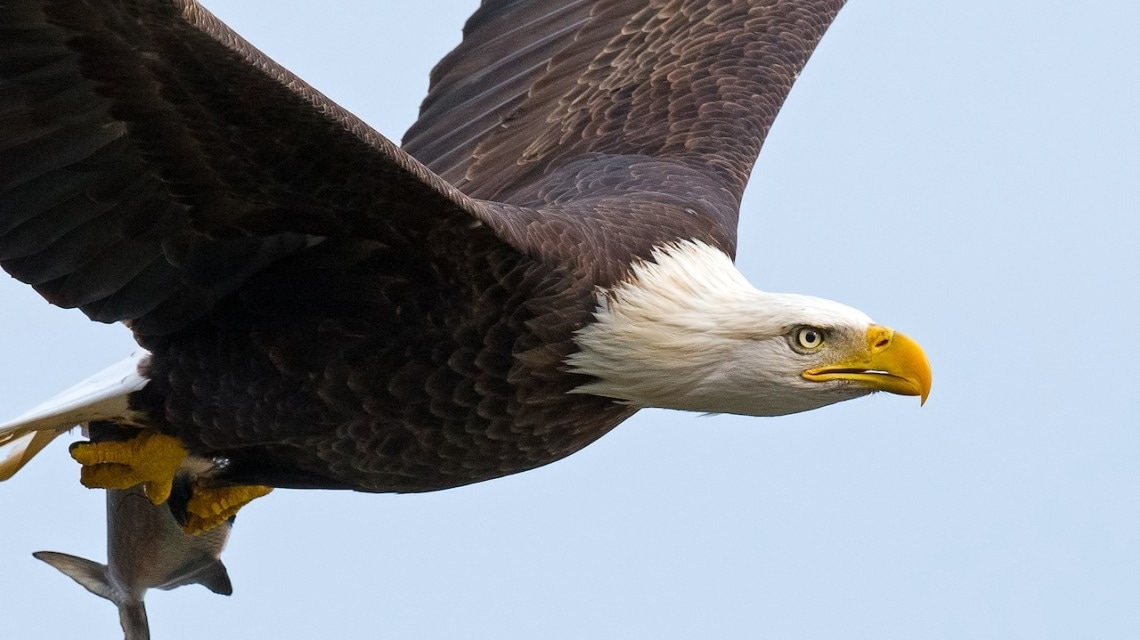Bald eagles in northwestern Washington state have become a blessing to dairy farmers, curbing pests and eliminating animal carcasses from their farms as they seek out new foods as climate change has modified their normal diet of salmon carcasses, according to a new study.
 Bald eagle. Image Credit: Brian E. Kushner/Lab of Ornithology
Bald eagle. Image Credit: Brian E. Kushner/Lab of Ornithology
The research published on March 10th, 2023, in the journal Ecosphere, describes the mutually beneficial relationship.
The narrative around birds of prey and farmers has traditionally been negative and combative, mainly due to claims of livestock predation. However, dairy farmers in northwestern Washington do not consider the eagles threats. In fact, many farmers appreciate the services that the eagles provide such as carcass removal and pest-deterrence.
Ethan Duvall, Study Lead Author and Doctoral Student, Ecology and Evolutionary biology, Cornell University
Duvall initiated face-to-face interviews with farmers on small, medium, and large dairy operations in Whatcom County with associates Emily Schwabe and Karen Steensma from the University of Washington and Trinity Western University in Canada to better comprehend this unique relationship.
The study was inspired by Duvall’s recent findings that eagles were relocating from rivers to farmland in response to the decreasing availability of salmon carcasses over the last 50 years.
Climate change has altered the chum salmon spawning schedule, causing them to run earlier in the winter. Now the salmon are spawning when annual Nooksack River flooding is at its peak. The fish who spawn and die are swept away by the high water instead of being deposited on shore where the eagles can easily access them.
Ethan Duvall, Study Lead Author and Doctoral Student, Ecology and Evolutionary biology, Cornell University
Duvall is affiliated with the Cornell Lab of Ornithology.
According to Duvall, the transition in timing has decreased the number of accessible carcasses on the local river, not the number of individual salmon. Still, several rivers in the Pacific Northwest have seen substantial decreases in salmon populations, limiting winter supplies for eagles.
To compensate for the decrease in their natural food supply, eagles have switched to a constant stream of dairy farm byproducts resulting from cow births and deaths, as well as prey on waterfowl populations that feed and rest in agricultural areas. Bald Eagles also keep traditional farm pests like rodents and starlings at bay.
We know this positive interaction between farmers and Bald Eagles is not the norm in many other agricultural areas, especially near free-range poultry farms where the eagles snatch chickens. But this study gives me hope that, moving forward, farmers, wildlife managers and conservationists can come together to think critically about how to maximize benefits for people and wildlife in the spaces they share.
Ethan Duvall, Study Lead Author and Doctoral Student, Ecology and Evolutionary biology, Cornell University
Journal Reference:
Duvall, E. S., et al. (2023). A win–win between farmers and an apex predator: investigating the relationship between bald eagles and dairy farms. Ecosphere. doi.org/10.1002/ecs2.4456.